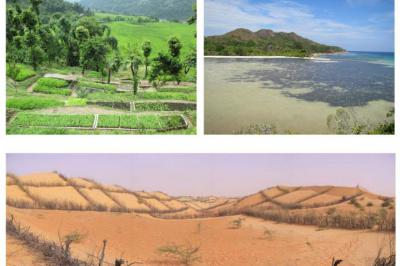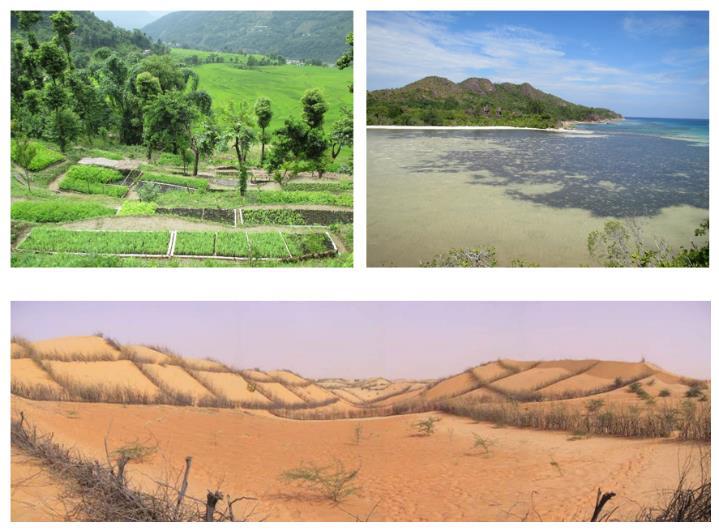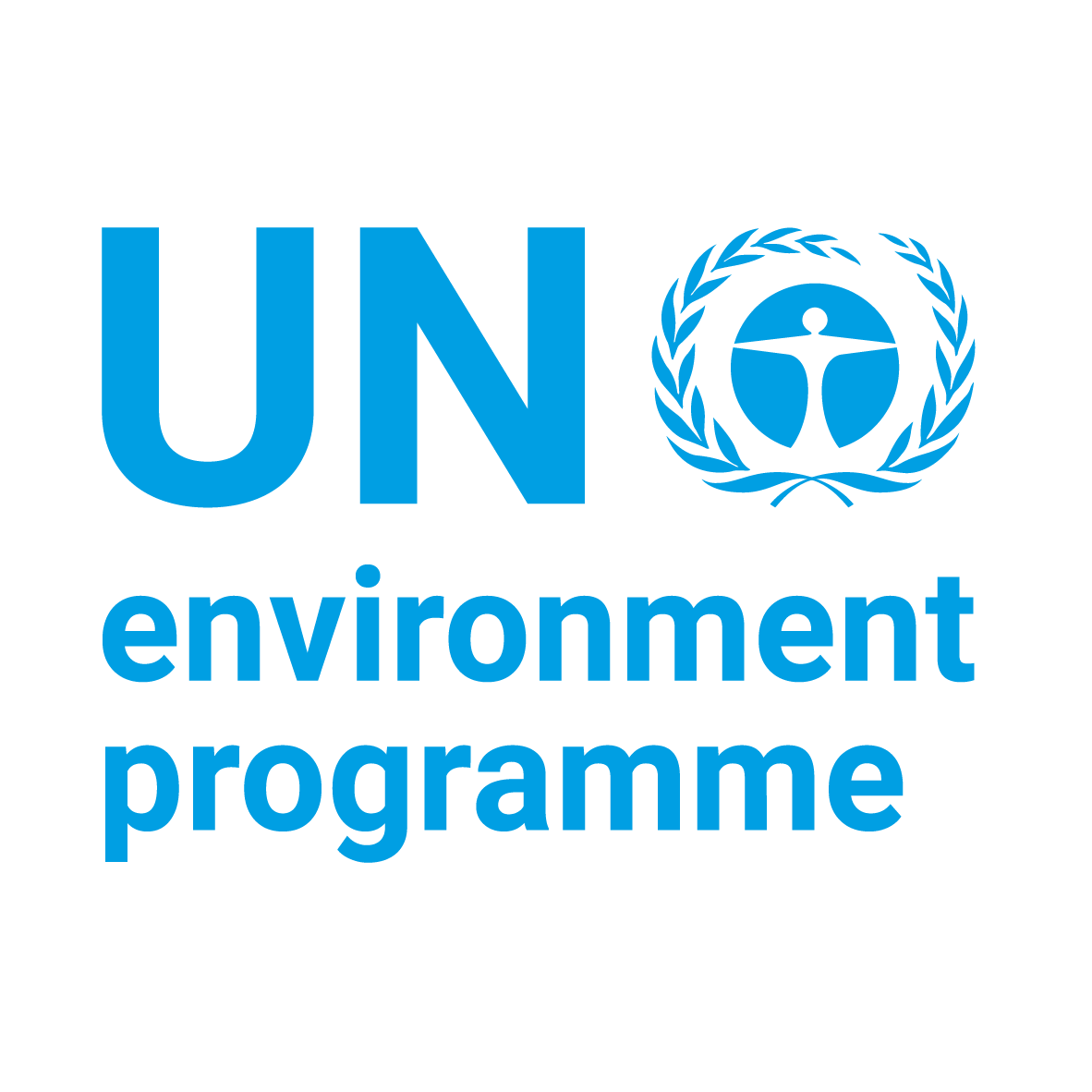
The global project EbA South, funded by the Global Environment Facility (GEF) through its Special Climate Change Fund (SCCF), was officially launched in Beijing, China, in April 2013. Implemented by the United Nations Environment Programme and executed by the National Development and Reform Commission of China (NDRC), through the Institute of Geographic Sciences and Natural Resources Research, Chinese Academy of Sciences, (IGSNRR, CAS), the project is reaching completion in 2019. The objective of EbA South was to build climate resilience in developing countries by increasing institutional capacity, mobilising knowledge and transferring appropriate EbA technologies to three pilot countries, namely the Islamic Republic of Mauritania, Federal Democratic Republic of Nepal and the Republic of Seychelles.
The EbA South project showed conclusively that EbA interventions are feasible in three different environments, namely dry Mauritanian deserts, Himalayan Nepalese forests and coastal zones in the Seychelles. Hundreds of hectares of degraded ecosystems were restored across these three ecosystems. The project also showed that assembling knowledge on EbA (in the form of tools, handbooks and school curricula guidelines) and then sharing it via websites and mailing lists is an extremely effective way of raising global awareness on EbA and catalysing new EbA activities. One example of this is that Rotary International in South Africa is using the school curricula guidelines developed by EbA South to motivate the government that climate change and EbA should be integrated into school curricula.
Like any project, the EbA South project encountered challenges and identified new opportunities during implementation. The project’s steering committee noted that it is of critical importance to document all the challenges and opportunities to enable other EbA projects in the future to build on the platform created by EbA South. To this end, the lessons learnt from the project will be presented in three different formats: a peer-reviewed paper, a report for the terminal evaluators of the project, and a series of blog posts. The blog posts presented below are the first step in a process towards assembling all the lessons learned. These posts will be used to generate discussion amongst stakeholders and refine the lessons for presentation in a peer-reviewed paper and project report. There are currently 5 blog posts available, namely:
Regularly revisit the exit strategy for managing ecological infrastructure
Sow the seeds of long-term research across multiple platforms and institutions
Hire professional scientific interpreters and conduct targeted joint research to ensure long-term South-South collaboration on the science of EbA
Quantify ecosystem goods and services in granular detail, and at a landscape scale, using state-of-the-art technology to heed international calls for urgent upscaling of EbA
Develop EbA project budgets that take into account the complexity and time-consuming nature of constructing ecological infrastructure.








